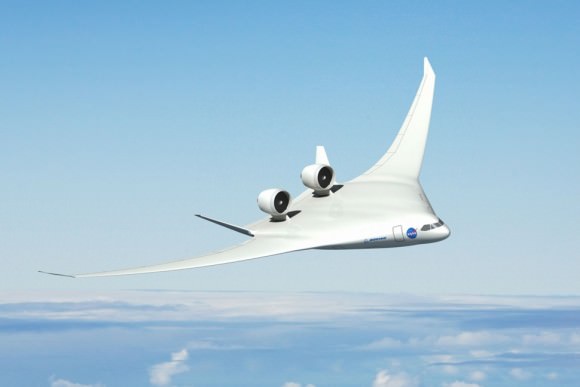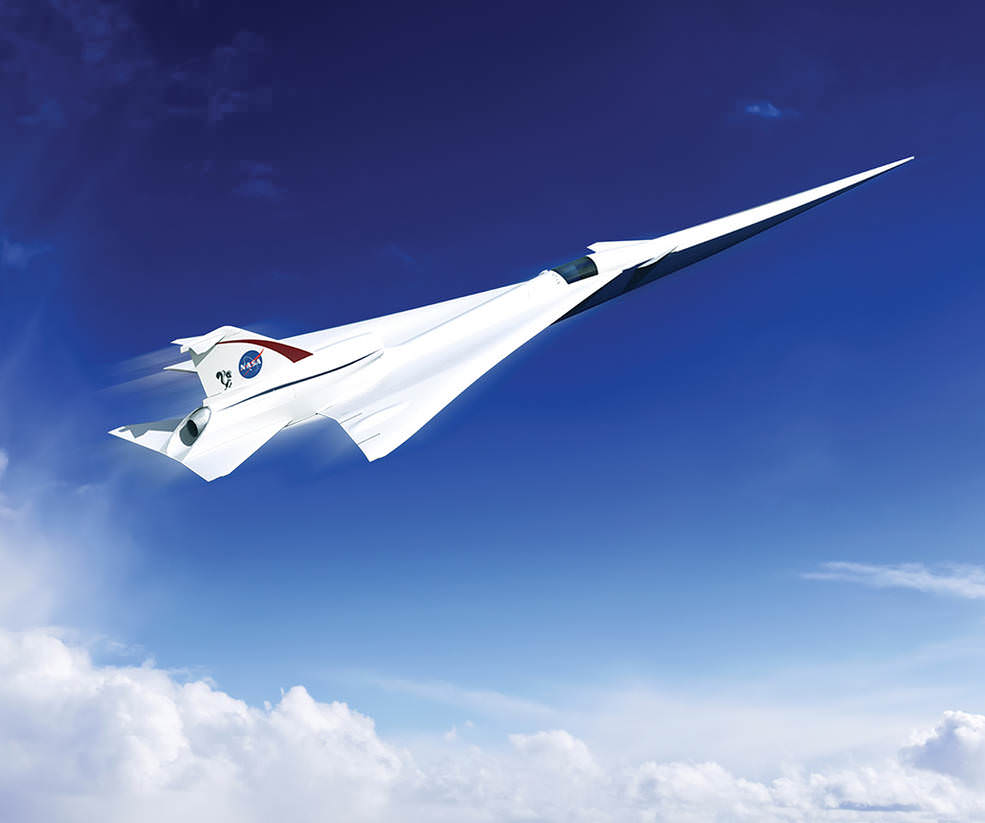NASA has plans to develop new supersonic passenger aircraft that are not only quieter, but also greener and less expensive to operate. If NASA’s 2017 budget is approved, the agency will re-start their X-Plane program, the same program which was responsible for the first supersonic flight almost 70 years ago. And if all goes according to plan, the first test-model could be flying as soon as 2020.
The problem with supersonic flight—and the reason it’s banned— is the uber-loud boom that it creates. When an aircraft passes the speed of sound, a shockwave is created in the air it passes through. This shockwave can travel up to 40 kilometres (25 miles), and can even break windows. NASA thinks new aircraft designs can prevent this, and it starts with abandoning the ‘tube and wings’ model that current passenger aircraft design adheres to. It’s hoped that new designs will avoid the sonic booms that cause so much disturbance, and instead produce more of a soft thump, or supersonic ‘heartbeat.’

The image above shows what a hybrid wing-body aircraft might look like. Rather than a tube with wings attached, this design uses a unified body and wings built together. It’s powered by turbofan engines, and has vertical fins on the rear to direct sound up and away from the ground. (Just don’t ask for a window seat.)
Lockheed Martin Aeronautics has been chosen to complete a preliminary design for Quiet Supersonic Technology (QueSST.) They will have about 17 months to produce a design, which will then lead to a more detailed designing, building, and testing of a new QueSST jet, about half the size of a production aircraft. This aircraft will then have to undergo analytical testing and wind-tunnel validation.
After the design and build of QueSST will come the Low Boom Flight Demonstration (LBFD) phase. During the LBFD phase, NASA will seek community input on the aircraft’s performance and noise factor.
But noise reduction is not the only goal of NASA’s new X-Plane program. NASA administrator Charles Bolden acknowledged this when he said, “NASA is working hard to make flight greener, safer and quieter—all while developing aircraft that travel faster, and building an aviation system that operates more efficiently.”
NASA has been working in recent years to reduce aircraft fuel consumption by 15%, and engine nitrogen oxide emissions by 75%. These goals are part of their Environmentally Responsible Aviation (ERA) project, which began in 2009. Other goals of ERA include reducing aircraft drag by 8% and aircraft weight by 10%. These goals dovetail nicely with their revamped X-Plane initiative.
It’s hard to bet against NASA. They’re one of the most effective organizations on Earth, and when they set goals, they tend to meet them. If their X-Plane program can achieve its goals, it will be a win for aircraft design, for paying customers, and for the environment.
For a look at the history of the X-Plane project, look here.


OK – let’s see it built and flying. Then we can start looking to the future. We have had too many paper planes.
Better methods of eliminating sonic booms have been known for decades. See “Mitigation/Elimination of Sonic Shock Waves”, http://scripturalphysics.org/4v4a/ADVPROP.html#MitigationOfSonicShockWaves : “. . . vehicles so designed could travel at Mach 25 (orbital velocity) but be subject to Mach 3 conditions in the region behind the shock wave. The ultimate goal is to build earth-to-orbit vehicles that reduce transportation costs by a factor of 100 to 1000. Such a vehicle might be “blunt bodied, lens-shaped or saucer-shaped” and would fly blunt face forward (like an Apollo heat shield). The electric energy drives the air radially away from the craft and transforms the traditional conical shock wave into a weaker parabolic one. The air behind the shock is very low in density and this reduces the heat transfer effects.”
More advanced schemes bypass the sonic boom problem altogether:
“Example: there are two kinds of position and two kinds of velocity. Remember those two terms in the non-local form of gamma? We are using only one of them for propulsion—the spatial velocity one that depends on Newtonian mechanics. The other possibility, that of non-local motion, has been left unexplored. Using that, an aircraft could move from one position in the sky to another without traversing the intervening space. It would appear at one location, then disappear, then re-appear at another location. It could move at extremely high speeds without generating a sonic boom. It would use “field propulsion” based on the non-local characteristics of electric and magnetic fields. It would be completely self-contained because there is no action/reaction (exhaust) as in conventional propulsion (in this case, the reaction forces are radial, and cancel out within the structure of the aircraft, making the preferred shape one of something with radial symmetry, like a saucer or cigar).”
See “Beyond Einstein: non-local physics” by Brian Fraser (2015) The .html file gives a link to the .pdf file but the former has additional information.
50 years ago the UK and France had Concorde. Had development been continued we would have already been there.
I want Skylon to be successful and can’t wait to see hypersonic mother ships launching orbiters from +/- 70,000 feet.
Back in the day.. the SR-71 had a drone, the D-21. The design failed, killing the crew. How NOT to launch at mach 3?
The HWB shown is not designed for supersonic, and certainly not quiet supersonic. Just try an image search for quiet supersonic or shaped quiet boom. They all have a long nose, some even have telescoping noses that are extended in flight. The shape of the aircraft helps shape the boom – a long nose translates to a gradual (quieter) sonic boom. Hybrid wing is designed for efficient and quieter subsonic flights.